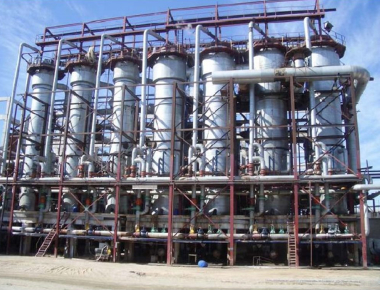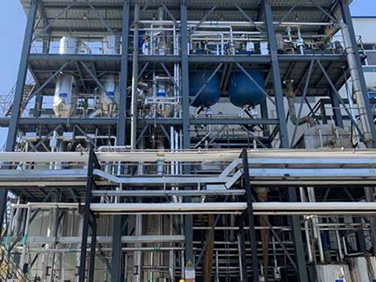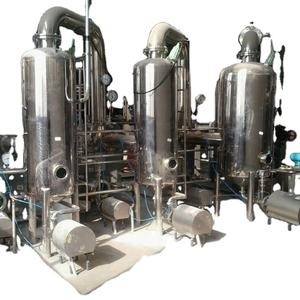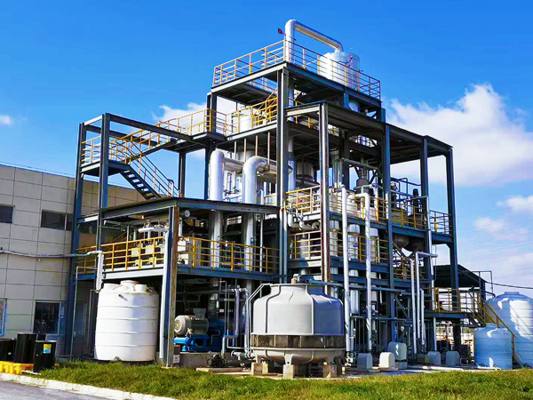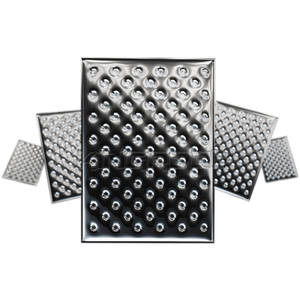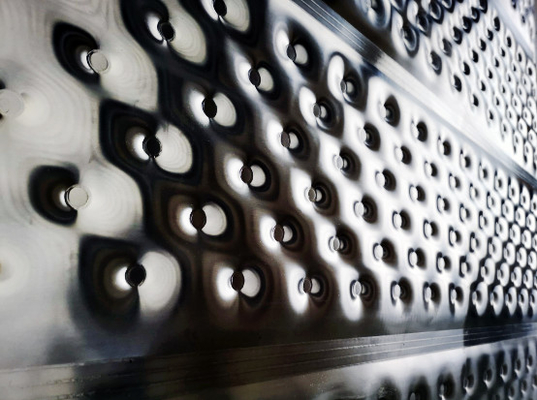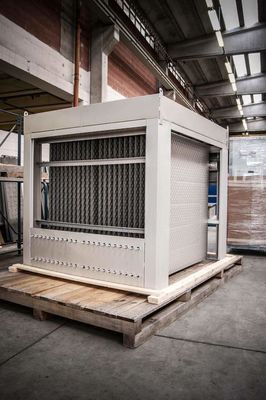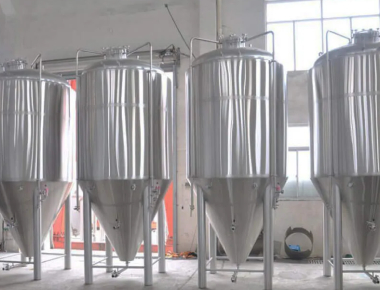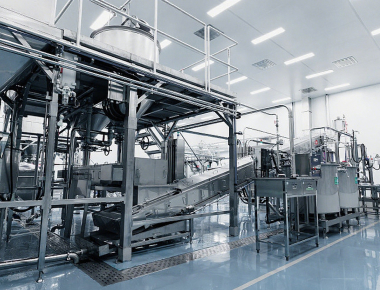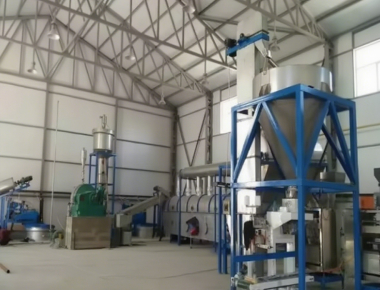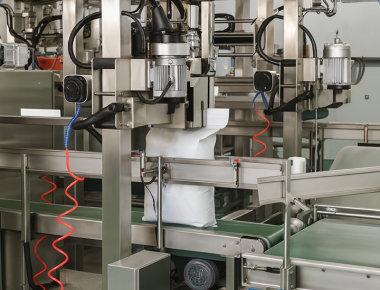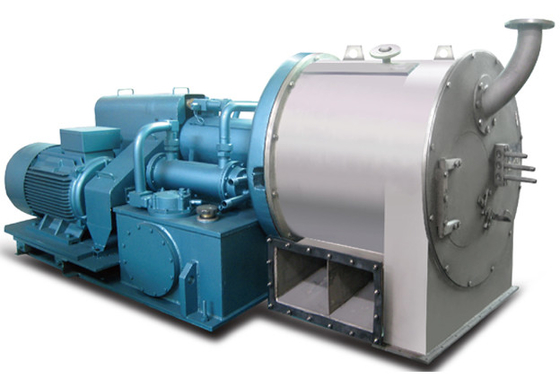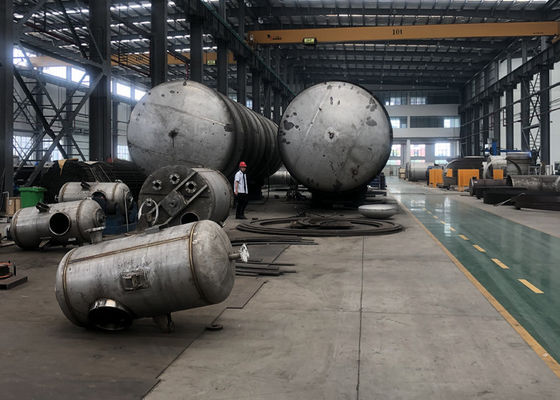Industrial Laser welded pillow plate Heat exchangers for MVR evaporator with High Safety Level
Industrial mechanical vapour recompression MVR
A heat pump uses energy to transfer heat from a lower temperature source to a higher temperature demand using additional energy. For industrial heat pumps, the heat source is process waste heat.
Mechanical vapour recompression (MVR) is an open heat pump system in which the pressure and temperature of the vapour, together with the corresponding saturation temperature, are increased by means of compression. Steam recompression is a specific variation of MVR. Low-pressure steam exhaust from industrial operations, such as evaporators or cookers, is usually vented to the atmosphere or condensed in a cooling tower, while other plant operations on the same site may require intermediate-pressure steam. Instead of expanding high pressure steam across a throttling valve to meet these needs, low-pressure waste steam can be mechanically compressed to a higher pressure so that it can be reused. Steam recompression relies upon a mechanical compressor to increase the temperature of the latent heat in steam to render it usable for process duties. The advantage lies in the fact that the required compression energy is very small compared to the amount of latent heat present in the recycled steam.
The energetic performance of steam recompression is expressed in the coefficient of performance (COP). The COP gives the ratio of the net recovered heat and the energy used by the compressor. In this case, the net heat is the steam production including the additional steam yield by water injection. Typical economical and energy-efficient applications have a minimum COP of 3.5. Some applications of MVR have a COP of 10 or even higher.
The key elements for a high COP are the following:
A low ratio of the absolute steam pressures. A guideline for the maximum ratio is 6, but in daily practice the ratio is about 3.
A minimum capacity. A guideline is a minimum of one tonne of steam per hour.Water injection after compression.
|
Name
|
Pillow plate type |
Shell and tube heat exchanger
|
Detachable plate heat exchanger
|
Spiral plate heat exchanger
|
|
Operating temperature range
|
<800℃
|
<800℃
|
<170℃
|
<350℃
|
|
Maximum pressure
|
<60 bar
|
<200 bar
|
<32 bar
|
<25 bar
|
|
Heat transfer coefficient to water[W/m2·℃]
|
3500
|
2700
|
5600
|
2000
|
|
Application of air and water heat exchange
|
fit
|
fit
|
not fit
|
Partial fit
|
|
Immersion in tank or water
|
fit
|
Partial fit
|
not fit
|
not fit
|
|
Welding of tank and reactor
|
Applicable
|
not applicable
|
not applicable
|
not applicable
|
|
Install into the existing reactor and other equipment
|
Flexible application
|
Partial applicable
|
not applicable
|
not applicable
|
|
All welded construction
|
Applicable
|
Applicable
|
not applicable
|
not applicable
|
|
Heavily contaminated liquids and other applications
|
Applicable
|
Applicable
|
Partial Applicable
|
Applicable
|
|
Weight per unit area
|
low
|
high
|
low
|
high
|
|
Falling film, condenser and evaporator
|
fit
|
fit
|
Partial fit
|
Partial fit
|
| Product Name |
MVR Evaporator |
| Application |
Waste Water Treatment |
| Condenser |
Vertical |
| Warranty |
12 months |
| Features |
Energy Saving/Low operation cost |
| Customized Service |
Yes |
Equipment Structure
Double-effect forced circulation evaporator is composed of heater, separator, vapor-liquid separator, condenser, vacuum pump, forced circulation pump, discharging pump, condensate pump, electrical cabinet, operation platform and all the pipe fittings, valves, instruments and etc.
Heater: Two sets of vertical type tubular heater connect in series. The feed liquid is pumped into the first heater by forced circulation pump, then enters into the second heater. The heated liquid flow downwards in tubes, and flow into separator by tangential direction, better performance of vapor-liquid separation.
Separator: Vertical type, the secondary steam is discharged from the top, pass through a vapor-liquid separator before entering into condenser. The bottom of separator is connected with a forced circulation pump.
Vapor-liquid separator: Is used to prevent tiny liquid drops produced during evaporation from escaping with secondary steam, reducing loss of feed liquid and prevent pollution to pipeline and cooling water.
Condenser: Condensate the huge secondary steam produced during evaporation into liquid by cooling water, making concentration carrying on smoothly. Meanwhile, separate non-condensable vapor from secondary steam and cooling water, make it easily pumped out by vacuum pump to guarantee vacuum degree.
Application
Distillation
During distillation, liquid mixtures of substances with different vapor pressures and boiling temperatures are separated. Examples include distillation of alcohol, or the recovery and purification of solvents.
Concentration
Evaporation produces a concentration of the substance being processed. In applications such concentrated milk or fruit juice production, evaporative systems are also used as a precursor to dryers in the food industry.
Crystallization
During the crystallization process, substances are separated from one another by using different solution equilibria. Applications include salt extraction and fertilizer production.
Production Capability




 Your message must be between 20-3,000 characters!
Your message must be between 20-3,000 characters! Please check your E-mail!
Please check your E-mail!  Your message must be between 20-3,000 characters!
Your message must be between 20-3,000 characters! Please check your E-mail!
Please check your E-mail! 
